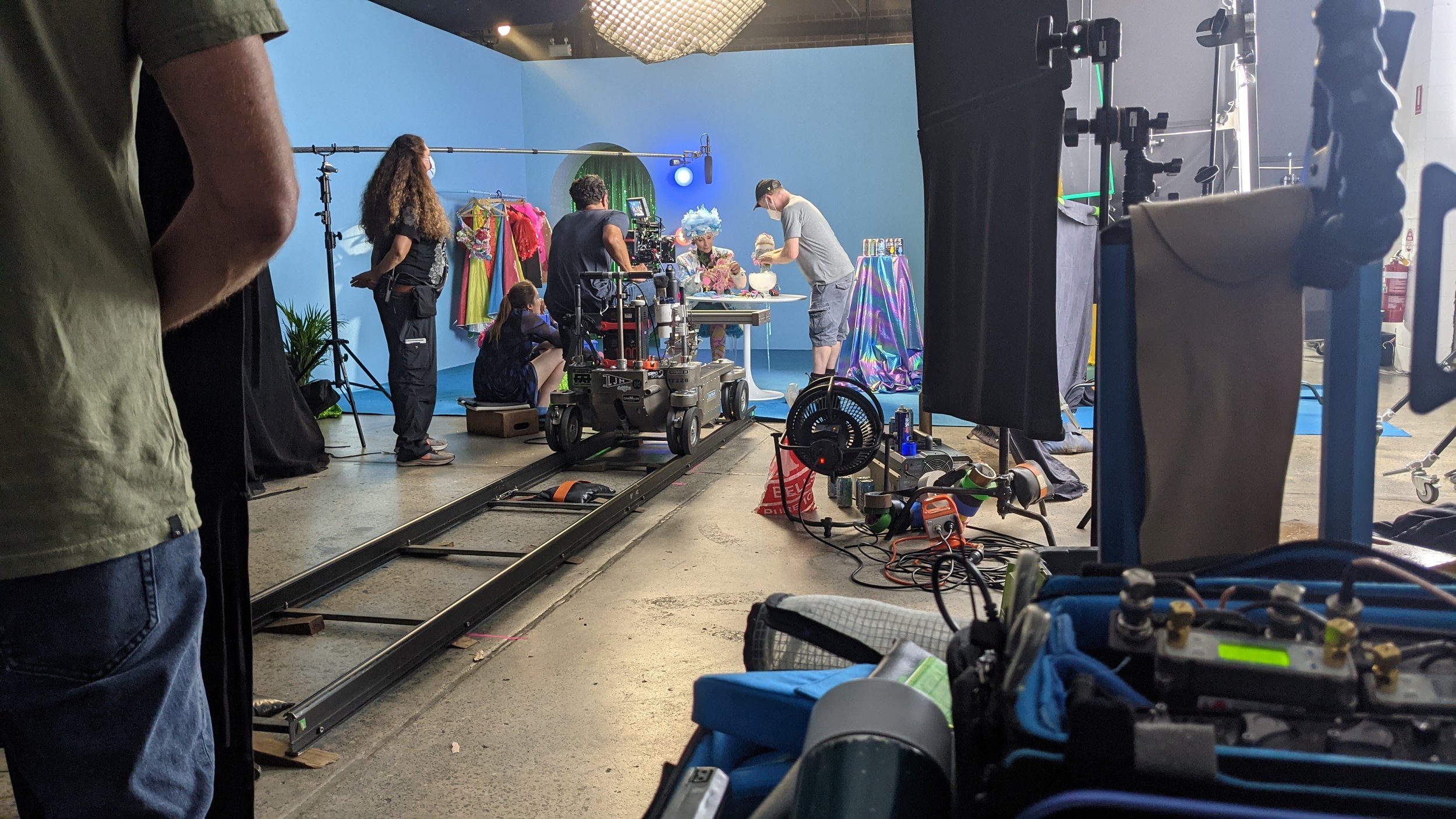Sound Recordist Rates
Labour Rates
Half Day: $500 (4 hours)
Full Day: $850 (10 hours)
Overtime: $125 (over 10 hours)
Standard labour rates include: Mixer, Boom, 2x Radio Mics and sound cabled to camera
Equipment Rates
Recorder: $150
Camera Link $150
Additional Radio or Boom Mics: $100
IFBs: $75
Timecode: $75
Timecode Slate: $100
Noise Reduction: $150
Additional Costs
Fuel: 85c per km over 50km
All rates are subject to GST
Gear and Labour Packages
Basic Package
$1000
Sound Recording for a full day with the gear required for a simple single-camera shoot such as interviews, vox pops, or short films.
Included in the package:
Sound Recordist for Full-day
Recorder
Boom Microphone
2x Wireless Lapel Microphones
Corporate Production
$1100
Sound Recording for a full day with the gear required to record audio and sync with the camera wirelessly required for productions such as corporate productions, content shoots, documentaries, and fast-paced Run-and-gun shoots.
Included in the package:
Sound Recordist for Full-day
Recorder
Boom Microphone
2x Wireless Lapel Microphones
Audio or Timecode to Sync Camera
TV Commercial Package
$1600
Sound Recording for a full day with all the equipment required to run sound on a large commercial set, recording audio, syncing with the camera and ensuring audio is heard by directors and clients on set.
Included in the package:
Sound Recordist for Full-day
Recorder
Boom Microphone
2x Wireless Lapel Microphones
Camera Link to send audio to Camera
Timecode Unit to Sync Camera
Digital Timecode Slate
4x IFBs
FAQs
-
The labour rates include a Mixer, Boom, two Wireless Lapel Microphones, and a cable to send audio to the camera. However, it's important to note that the Recorder is not included in the standard labour rate.
-
For a full day that doesn't require much additional equipment, the cost is typically around $1000. This includes $850 for labour and a standard kit, with an additional fee of $150 for the Recorder.
-
In addition to the standard equipment covered by the labour rate, there are several essential pieces of equipment required by the sound department for most shoots. Here is a list of additional equipment that may be needed:
Recorder
For most projects, a recorder is essential to record high-quality audio files that include both the audio mixed on set and ISO track recordings of each track, which can be remixed in post-production.
Camera Links
Camera Links are wireless units that send the audio mix to camera. This audio can be sent as a mono or stereo mix and can be used for the main edit or to sync audio and video files from one or more cameras. Camera Links are essential for any shooting using VTR, playback, or live streaming, and they can be very useful on projects with a quick turnaround where syncing audio and files can add time to the editing process. With Camera Links, you can ensure that your audio and video files are synchronized seamlessly, saving you time and streamlining the post-production process.
Timecode Sync
Having timecode synced on both audio and video files is crucial for smooth post-production editing. Timecode synchronization ensures that audio and video files are aligned and can be easily matched in any editing software, saving time and streamlining the editing process. With timecode synced, editors can quickly locate and match audio and video files from multiple cameras and recorders with just a few clicks, ensuring a seamless final product. This feature is particularly useful for large-scale productions with multiple cameras and audio recorders, where manually syncing files can be a time-consuming and error-prone process.
IFB/Headsets
IFBs are wireless headsets that allow members of the production team to listen to what is being recorded in real-time. They are often required on set for directors, producers, clients, and other stakeholders who need to monitor the audio being captured. IFBs are almost always essential on commercial projects where they are used to allow clients to hear what is being shot and provide feedback.
Additional Microphones
The standard labour rate typically includes two wireless lapel microphones and one boom microphone. If additional microphones are required, they will come at an additional cost.
Noise Reduction
In noisy environments, onboard noise reduction can be beneficial in reducing background noise and improving dialogue clarity. With this feature, you will be provided two tracks with noise reduction applied, as well as a version of each track without noise reduction so that they can be adjusted in the edit. This feature can be particularly useful for shoots with a quick turnaround where there is not much time to apply noise reduction in post-production.
-
While I do have standard commercial rates, I am always happy to discuss rates on a case-by-case basis for the right projects. If you have a non-commercial project such as a film or documentary that you need a Sound Recordist for, please don't hesitate to contact me to talk about the project. I'm open to finding a rate that works for both parties.







